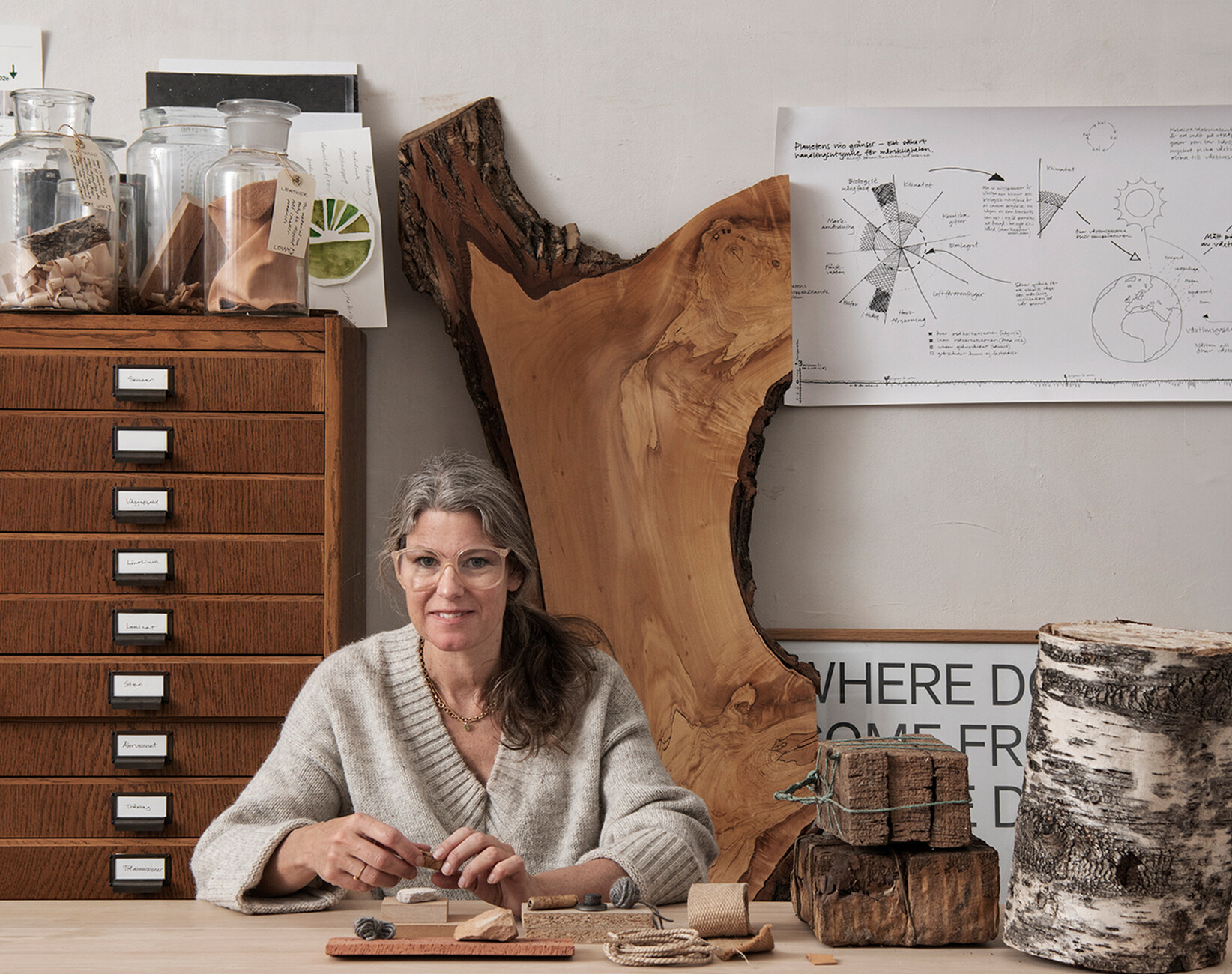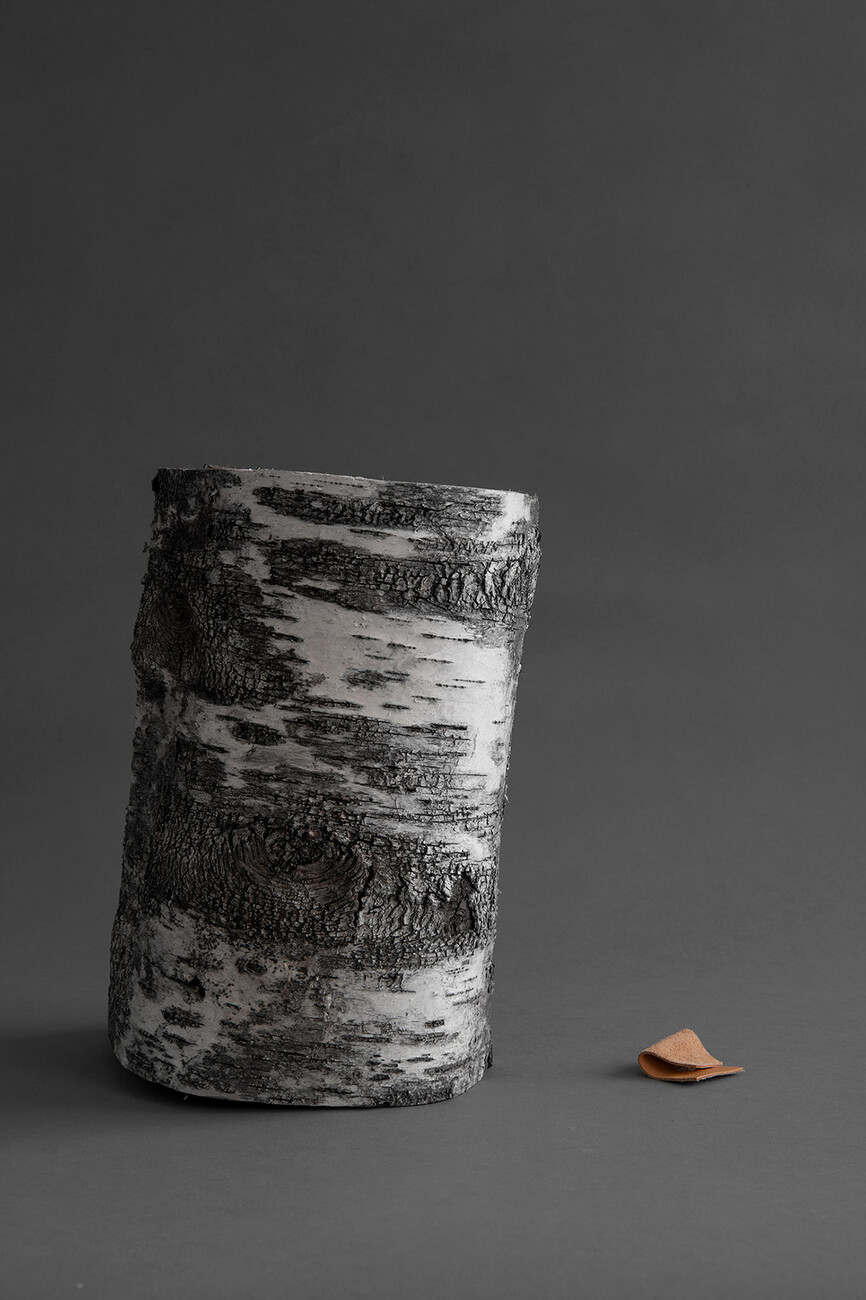SUSTAINABILITY
The power of choice
Anna Moldenhauer: What is "Now or never 1kg CO2e" about?
Emma Olbers: The overall theme is what impact our furniture has on the climate, with a focus on materials. Every material will be shown in one kilo of emissions, CO2e, which will make it very easy to see the differences and how much material you actually get for 1kilo of CO2e, Carbon Dioxide Equivalents (all greenhouse gases). The show is organized together with the design and innovation agency EY Doberman, which also supported me with the concept design, and Doconomy who provided the data and research. Form us with Love, Polestar, and Nrep are also involved. We basically show the path of the material up to the point where a company buys it for further processing into furniture, from cradle to factory gate. I did a similar exhibition back in 2016, but this current exhibition is much more detailed and expressive.
When researching the climatic effects of the materials, was there any insight that surprised you?
Emma Olbers: For instance, the difference between leather and birch surprised me – if you use birch wood instead of leather for a chair seat, and the materials are the same weight, the CO2e can theoretically be reduced by about 300 times.
”If you use birch wood instead of leather for a chair seat, and the materials are the same weight, the CO2e can theoretically be reduced by about 300 times.“
The furniture industry has been trying to reposition itself for some time, presenting, for example, biological material alternatives and new concepts for recycling. Are we on the right track?
Emma Olbers: We are too slow. We need to reduce our greenhouse gases by 50 per cent by 2030 if we are to align with the Paris Accord. As part of this, we also need to change our perspectives and produce and consume less.
Do you think a change in mentality is needed?
Emma Olbers: I think a change in behavior is needed, we need a stronger will to make a change. But of course, the right decisions by politicians are also needed, a framework that promotes change needs to be there. For many companies it is still more expensive to produce sustainably than to choose the path of business as usual. The financial incentives need to better support green change.
You work as a designer and creative director yourself. How difficult is it for you to work sustainably?
Emma Olbers: Today, I´m lucky the companies I work with usually request sustainable furniture directly when we start to collaborate, it can be very straightforward – but of course, it may be problematic if the product gets a much higher price or take longer time to produce. I think “form should follow planetary boundaries” and this way of thinking can of course start a lot of discussions. For example, when you really like the look of leather but that material has a really high climate impact.
You have already worked with numerous companies, from large corporations to small furniture manufacturers. How can I imagine your approach to optimising processes?
Emma Olbers: When I work, I try to work with the planetary boundaries in mind. I try to create products that are efficient both from an environmental and functional perspective. Looks may not always be a first priority. During the design process I try to outline the criteria for that particular product. For example, can I reduce the size or the weight or find a low impact material for this product? How do you maintain and recycle the product? It is also important that the end customer really likes the product, so that he or she keeps it for a long time.
Do you see a difference in the Swedish furniture industry's approach to sustainability compared to the rest of Europe?
Emma Olbers: So far I have mainly worked with Scandinavian and French companies. However, I find it important to regularly point out the importance of these topics, for example when I´m in meetings with designers and companies. Using recycled material, low impact material, little amount of material and switching energy source to renewable will make a lot of difference in the carbon footprint. As I see it, we can't wait any longer and we have to start changing how we look upon designing and producing furniture now.
Now or never – 1kg CO2e
7 to 11 February 2023
Stockholm Furniture Fair
Stockholmsmässan, Mässvägen 1, 12580 Stockholm
Hall C







